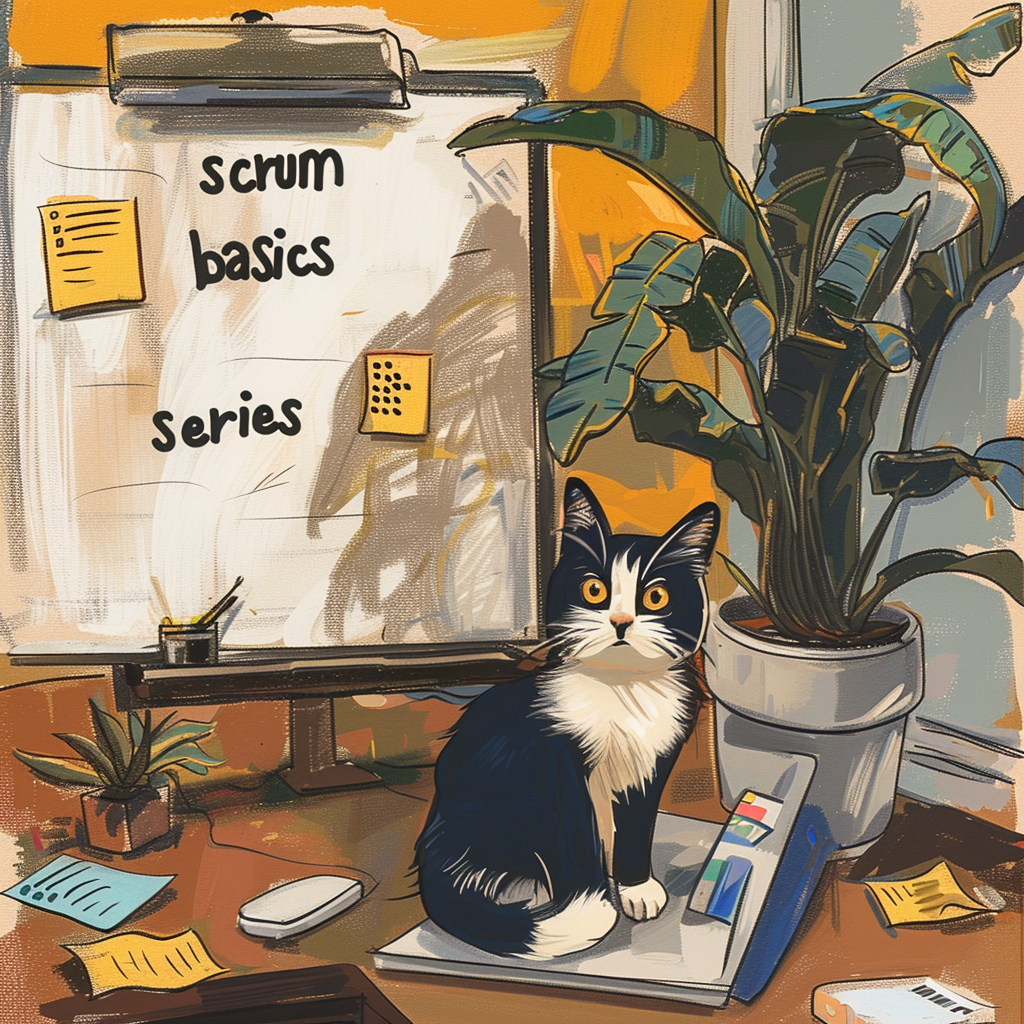Scrum for Beginners 3-5-3 Part 5: Sprint Review Basics and 3 Pro Patterns

Hello! This is Part 5 of a series on scrum using the 3-5-3 framework (3 roles, 5 events, and 3 outputs) where we use the Scrum Guide as a base for our learning.
In this article we will cover:
Click the emoji to jump to each section in the article.
What is the Sprint Review?
The sprint review is one of 5 scrum events as detailed in the Scrum Guide.
As a tip, if you want to know basic information about scrum, the Scrum Guide is a fantastic resource.
The Scrum Guide says:
The purpose of the sprint review is to inspect the outcome of the Sprint and determine future adaptations. The Scrum Team presents the results of their work to key stakeholders and progress toward the Product Goal is discussed.
During the event, the Scrum Team and stakeholders review what was accomplished in the Sprint and what has changed in their environment. Based on this information, attendees collaborate on what to do next. The Product Backlog may also be adjusted to meet new opportunities. The Sprint Review is a working session and the Scrum Team should avoid limiting it to a presentation.
From this we can understand that the sprint review is the time to show what we've built to key stakeholders. Lots of scrum teams do this part very well.
The part that's easy to forget (and why I've bolded it above in the original text) is the sprint review is also a working session where the scrum team and stakeholders work together to update the product backlog. Based on feedback from the newest increment, market changes, budget changes, and anything else that may have an affect on the product goal the sprint review is a chance to adjust for new opportunities.
Another way to think of flow of a sprint review is What? So what? Now what?, to borrow the framework from Terry Borton who popularized this learning cycle.
What? So what? Now what? in a sprint review can look like the following:
(What) do we have to work with?
This includes our increment and any big changes to our situation
(So what) we have feedback and changes?
Do these changes matter? If so, why do they matter?
Why is it important for us to know capacity of teams or shifts in the market or economy?
(Now what) do we do with this information?
How do we as a team use the remaining time in the sprint review to form a plan to respond to these changes?
Many scrum teams and many organizations only focus on the What?, even fewer make it to So what?, and very very few manage to get to Now what?
The sprint review exists so we can purposefully gather everyone needed to start having these important conversations.
Who joins the Sprint Review?
There are lots of people who can join the sprint review. Here are the mandatory participants and their roles:
Engineers:
Engineers are the reason we have an increment to examine. They are a necessary part of the equation because they know the intricacies of what was built. They are also the best to share where expectations (or dreams) and reality clashed, especially in implementation.
Product Owner:
The product owner brings the product vision from the point of view of stakeholders (business and users included). The PO is responsible for categorizing feedback and prioritizing it based on what is possible and needed while still delivering a solid product goal that the team can be motivated by.
Scrum Master:
The scrum master's role in the sprint review is not flashy. Much like in the daily standup, the scrum master's job is to ensure that participants are engaged, the sprint review is satisfying the purpose for which it is being held, and that time boxes are honored.
Additionally, the scrum master is usually interested in observing things like:
-Are the appropriate stakeholders invited (can they give feedback the team needs)?
-Is the purpose of the sprint review clear for everyone?
-Is conversation happening in a constructive way (no talking over each other, one person isn't talking all the time, opinions are being listened to)?
-Are participants engaged?
-Is the feedback being given in a way that is receivable?
-Is the feedback being recorded properly so the team can use it?
-Is the time-box being respected to maximize value without losing engagement?
Aside from the Scrum Team, stakeholders are the most important participants to the sprint review.
The "right" stakeholders participating to the sprint review is crucial to ensure maximum value. In particular a good mix of the following is recommended:
- People close to the users (or are a user themselves)
—> they can demo the increment and give natural feedback - People with domain knowledge of the product being built
—> they can contribute important feedback about must-have features or specs - People with market expertise and knowledge of competitors
—> they can share big market/tech trends or things from competitors that will affect priorities - People with decision-making power in case of budget discussions
—> they can help make decisions involving timelines/capacity/etc
3 Sprint Review pro patterns for any team
Here are 3 quick pro patterns for more productive sprint reviews:
1. Have an agenda
It's easy to use up the entire time-box only doing demos. Having an agenda will help guide your sprint review so you can keep on track to maximize value.
Here is an example agenda for a sprint review:
- Check-in to remind everyone why we're here and what we hope to accomplish
-Sharing of product goal from PO: Why are we building this?
-Demo portion from Scrum Team of the newest increment along with sharing what went well and what didn't during the sprint
-Get feedback from stakeholders (feedback should be useful to the team)
-Information sharing from stakeholders to learn how our situation has changed since the last sprint review
-Discuss changes we need to make to the product backlog for next time
The biggest benefit of having an agenda is not to follow it 100% every time; it's a reminder of the team's purpose for gathering and the outcomes and outputs they hope to achieve.
2. Prepare for the sprint review
The sprint review has a lot of important discussions that need to be had. Preparing is a part of participating in the sprint review in order to maximize the value able to be received.
Some preparations that could help improve the sprint review:
- Decide what information the team wants to share- is there a demo this time? / Is it mostly sharing?
- Decide what kind of feedback the team needs the most this sprint review? Will there be people there who can give that feedback?
- Make sure the product backlog is updated and ready to accept new information
- Do a dry-run/rehearsal
Just by implementing a few of the above tips you can reduce the time you spend getting everyone on the same page and more time inspecting and adapting to your changing situation.
- Review your sprint review
The sprint review is the most important event for gathering feedback and updating the product backlog based on new information.For this reason alone (but there are many others!), it's important to know if your sprint review is working.
Apply the inspect and adapt process to your sprint review, using the Scrum Guide and your team/org's purpose for the sprint review as a litmus test to find what needs to be changed.
I hope this helps clear up some basic information about the sprint review and gives you some inspiration for how you can make your sprint reviews more effective.




